Songwriting basics: how to create a modern pop song using just 4 chords
These days, it’s all about subtle variations in the arrangement
Pop music obviously derives from ‘popular’, but like all art forms, whatever is currently popular changes.
While individuality is always to be encouraged, if you want your tunes to fit well against the current landscape, they’ll inevitably need to conform to some extent to what your audience is expecting. This applies not only to the sound, production and genre of a song, but also to its structure.
Successful pop songwriters always keep things simple enough to lock a tune into a listener’s subconscious, with enough tonal variety to keep them interested. So, while there are no hard rules to structuring a song, in this lesson we’ll illustrate one way to give a fairly traditional pop song format a more modern twist, using variations in the arrangement of a few parts to make a complete song from no more than a simple, four-chord progression.
For illustration, we’ve mocked up a lead vocal from random samples, split into five main sections - Verse, Pre-chorus, Chorus, Drop and Bridge. Each has its own distinct melody, and - importantly - all work well over the four chords we’ve chosen.
t’s the uniqueness of each section’s melody that will define our song’s structure, rather than the unwavering chord progression beneath it.
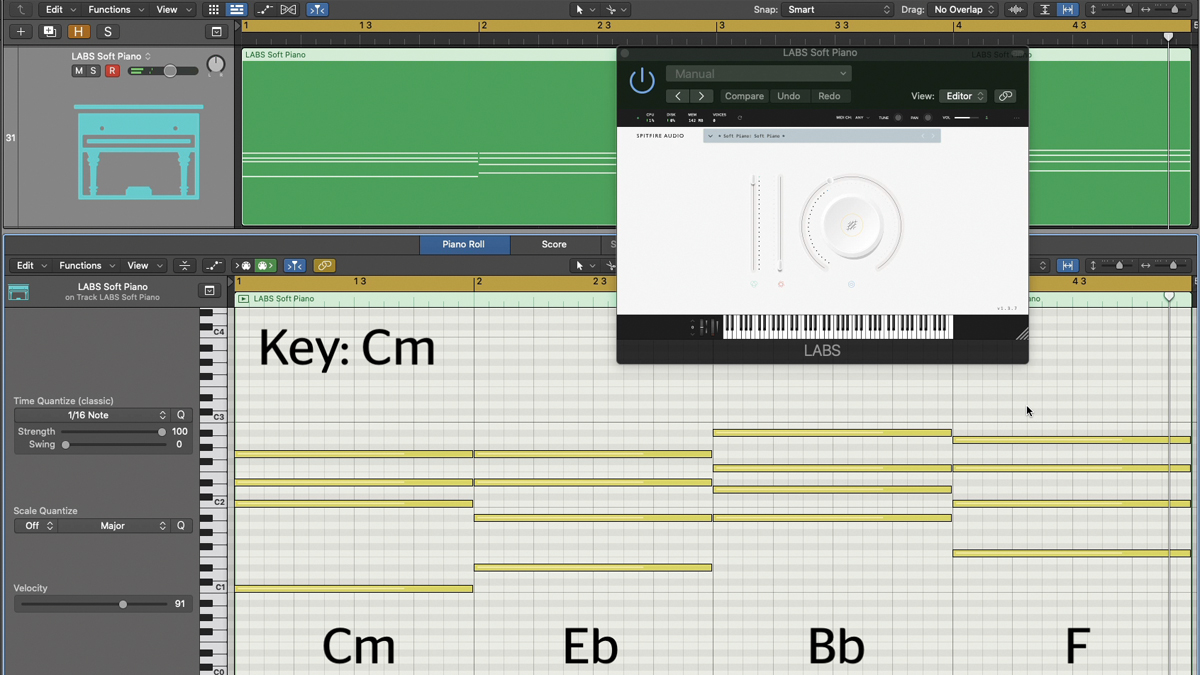
Step 1: Let’s map out our four chords. We’re using a basic i > III > VII > IV progression in the key of C minor, so that gives us Cm, Eb, Bb and F. The idea is not to deviate from these chords throughout the song, but do more with them arrangement-wise. We’ve programmed them using Spitfire Audio’s free LABS Soft Piano instrument.
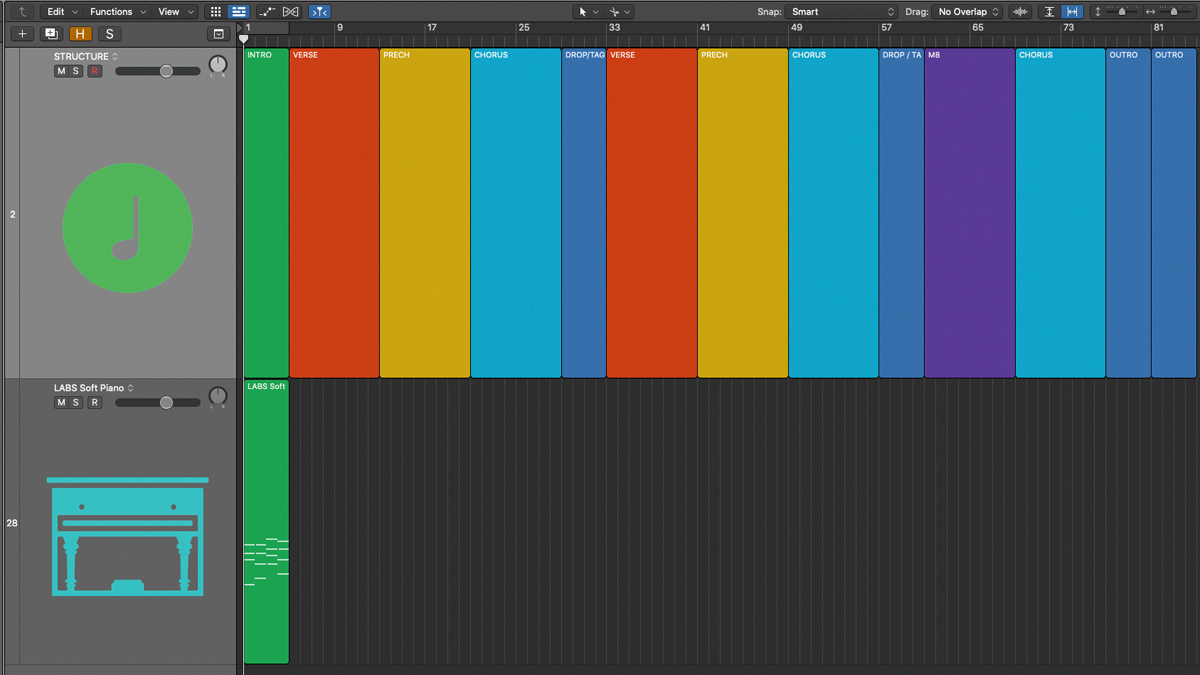
Step 2: We’ve labelled the sections we’ll include in the song. We have a fairly traditional arrangement of four-bar intro, eight bars each of verse, pre-chorus and chorus, followed by a four-bar drop/tag. Then a repeat of the verse, pre-chorus, chorus and drop, followed by an eight-bar bridge (or middle 8), one more eight-bar chorus and eight bars of a drop outro section.
Get the MusicRadar Newsletter
Want all the hottest music and gear news, reviews, deals, features and more, direct to your inbox? Sign up here.
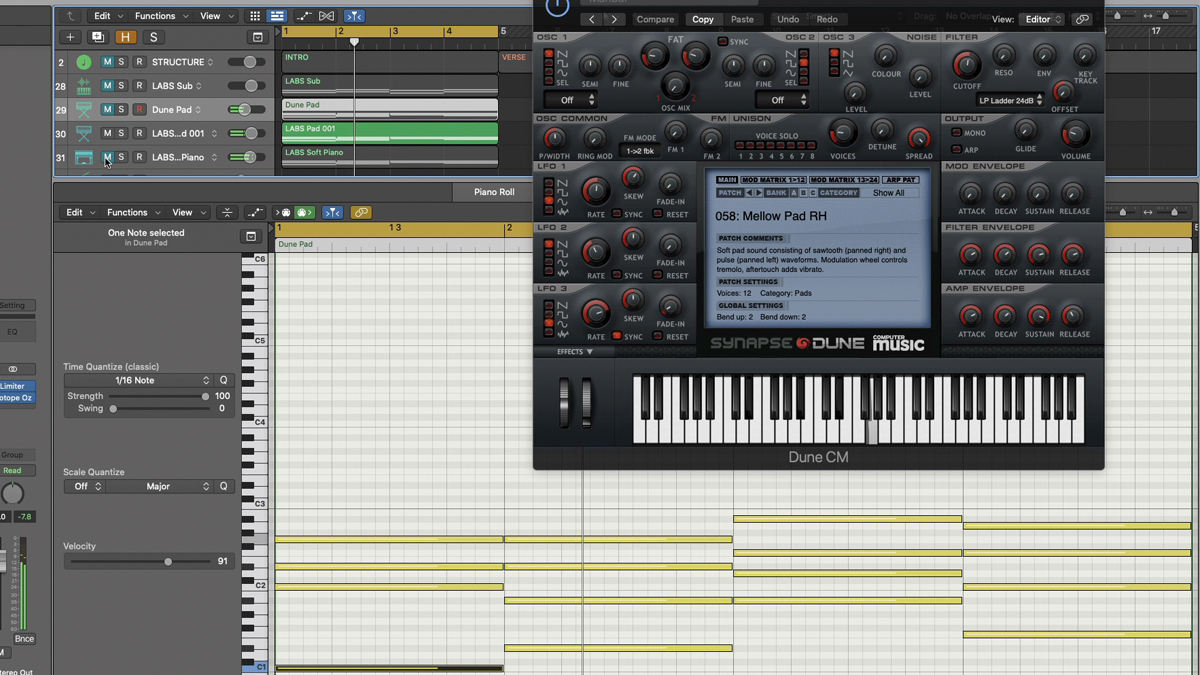
Step 3: A different blend of stacked pad sounds will give each section identity. So, starting with our intro, we’ve doubled our Soft Piano chords with Dune CM’s 058 Mellow Pad RH preset, plus Spitfire’s LABS Synth Pads preset #001, playing an octave up. For bottom end, the Sub preset from Spitfire’s Piano Pads instrument plays octave root notes of each chord.
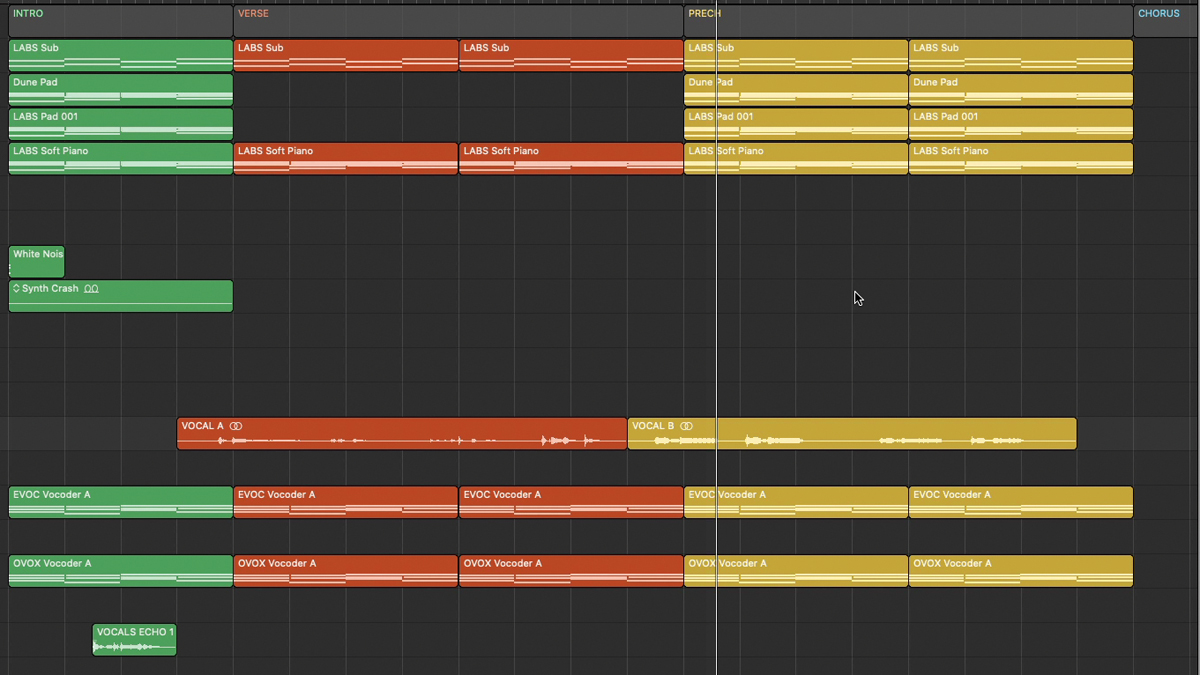
Step 4: For our eight-bar verse section, we drop out the two pads, leaving just the Soft Piano and Sub tracks. The verse vocal melody enters, heavily treated with vocoders, reverb and delay effects to fill the sparseness of the musical backdrop. The pads re-enter for the eight-bar pre-chorus, along with its accompanying vocal melody.
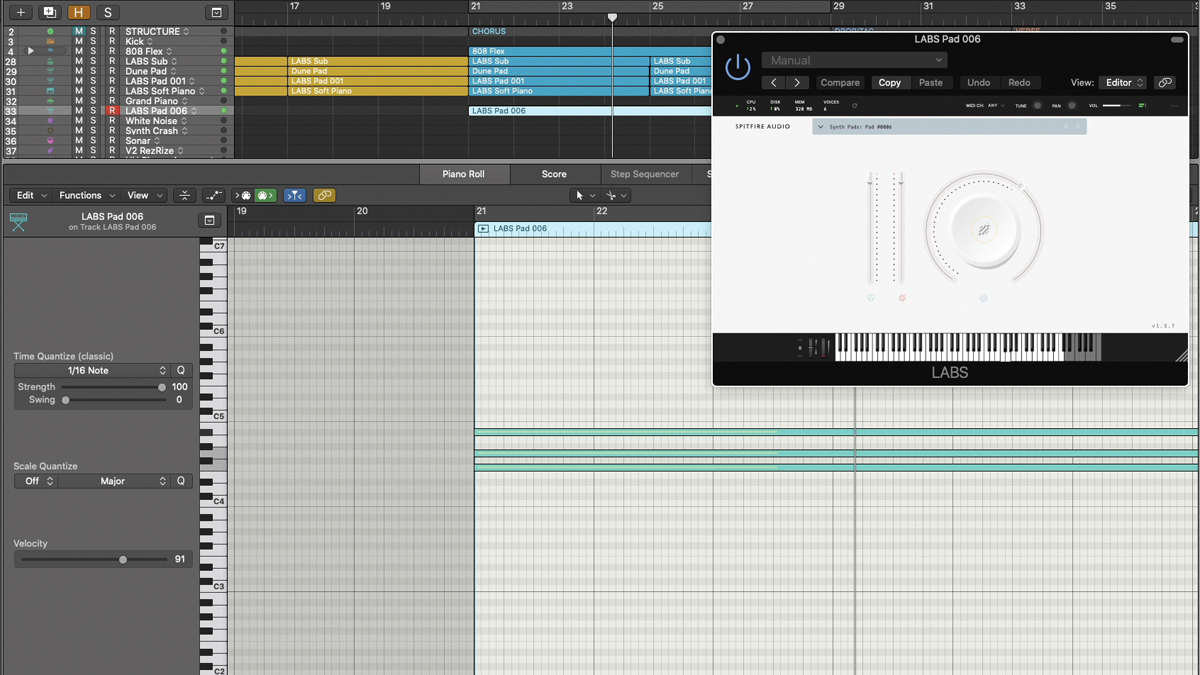
Step 5: Next up comes our first chorus with another new vocal melody, together with vocoded backing vocals triggered by the same four-chord pad part. This is also where we get our first hint of drums - a simple, reverbed 808 snare hit on beat 3 of every bar - and a tense, high sustained Gm7 cluster chord that comes from Spitfire’s Synth Pads LABS preset 006.
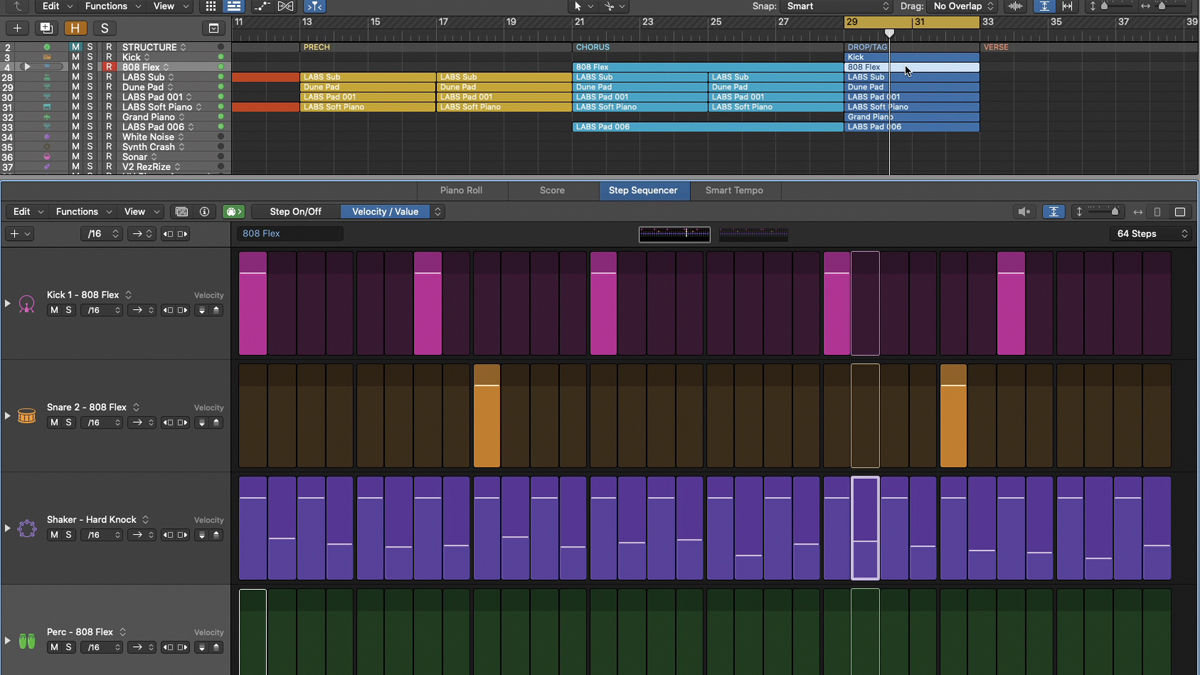
Step 6: A short, four-bar drop follows - we cut the chords off short in the last bar of the chorus to set it up, then a full drum kit kicks in, adding a heavy kick and 16th-note shaker together with a grand piano from Modartt’s Pianoteq to add weight to the chords. The tense, high pad chord continues over the pads, and the vocal melody changes again to our main hook.
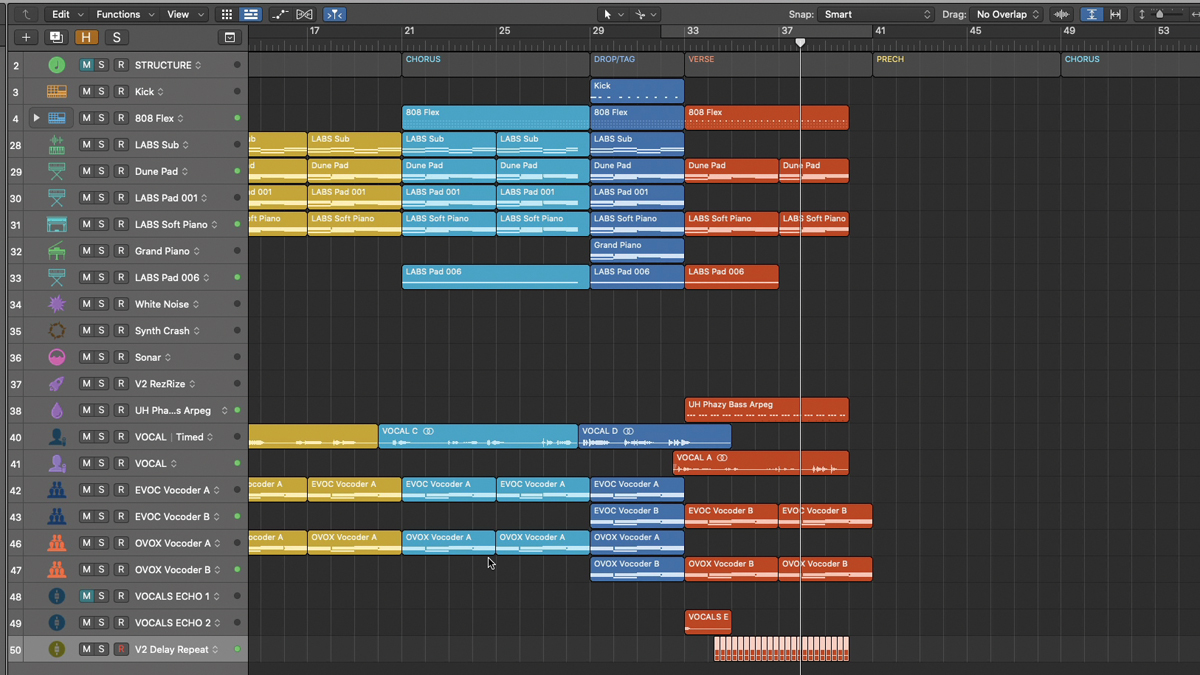
Step 7: For verse 2, we lose the LABS Sub and high pad parts, leaving just seven bars of Dune pad and Soft Piano chords, another combo we’ve not yet had. The drums fall back to eighth-note closed hats and snare and we’ve also added a phased, auto-panned arpeggio and spun a repeated quarter-note echo on the last note of the chorus vocal that persists.
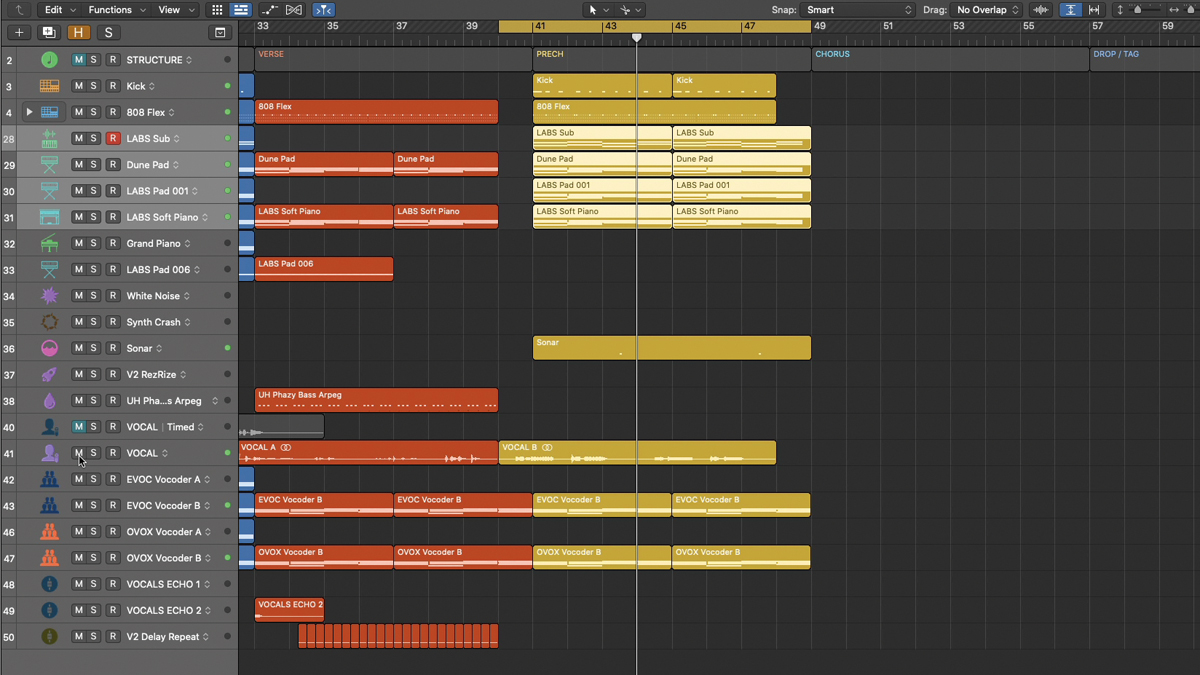
Step 8: For pre-chorus 2, I’ve dropped out the snare and hat and replaced them with the kick pattern from the last half of the drop, cutting it out again for the last bar. The LABS Sub and Pad re-enter and so we then supply some ear candy in the form of a sonar noise sound effect with some subtle pan modulation, making it drift from ear to ear.
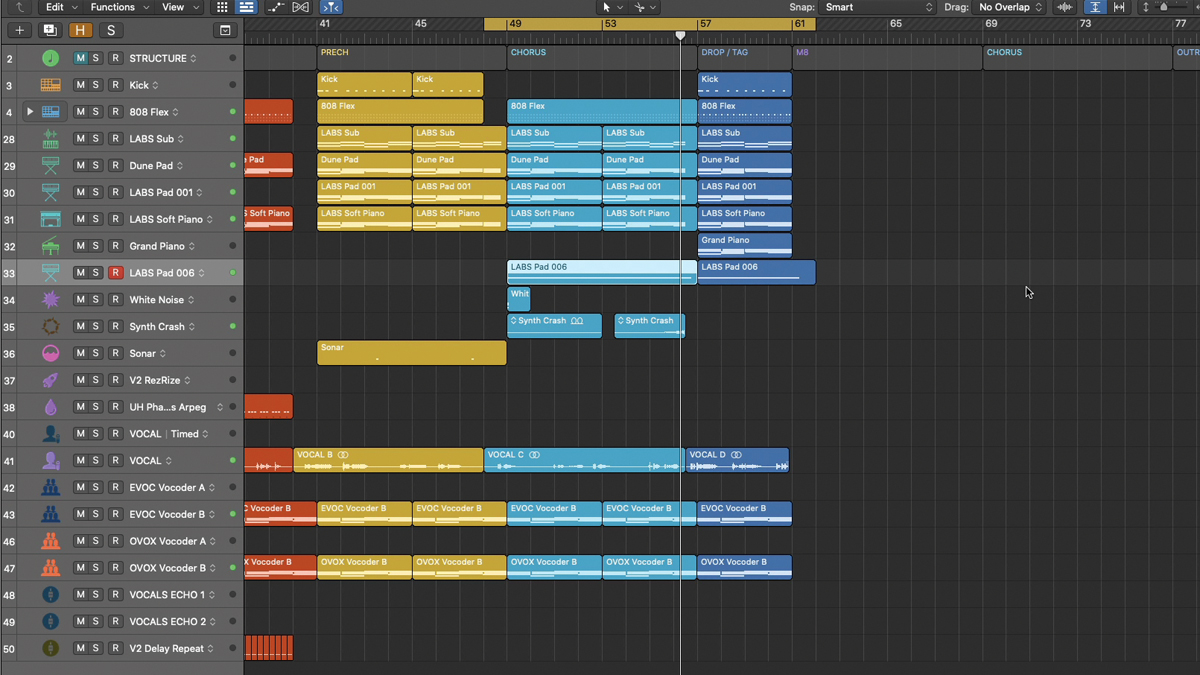
Step 9: The second chorus is exactly like the first, with its lonely snare and tense high pad chord, except for a white noise crash and reverbed synth effect on the downbeat. The synth effect is then reversed and placed at the end of the section in order to intensify the buildup to the next drop, which is also an exact copy of the first.
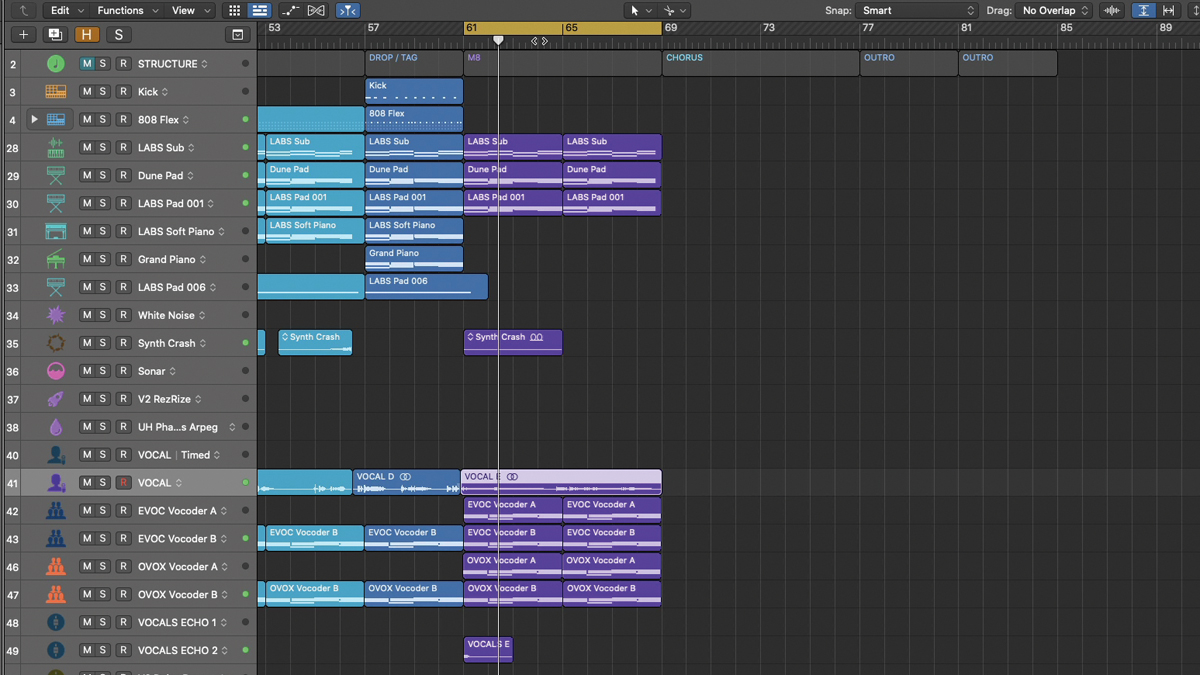
Step 10: The bridge (or middle 8) drops the Soft Piano and Grand Piano from the pad stack, and also cuts all the drums, leaving just the Dune and LABS pads and LABS sub - another previously unheard combination. This section is punctuated at the start by the synth downbeat effect, this time without the white noise, and also contains a brand new vocal melody.
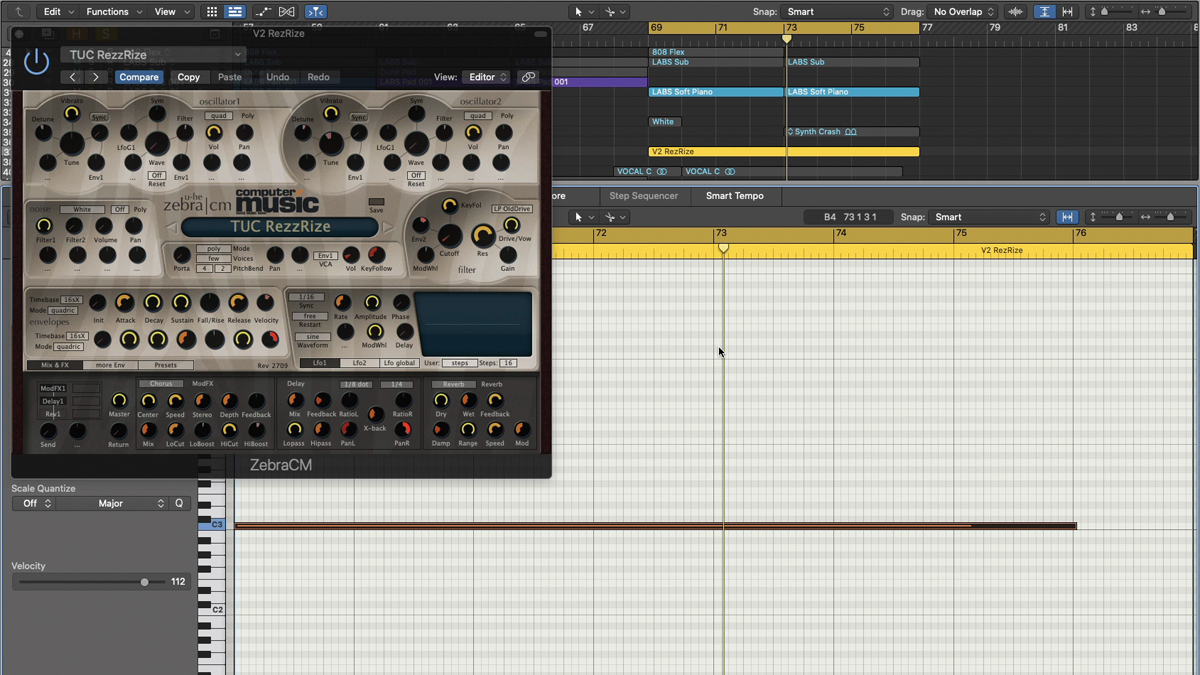
Step 11: Chorus 3 breaks it down again to just LABS Soft Piano and Sub beneath the chorus vocal melody. Aside from a white noise burst on the downbeat and the odd perc flourish there are no drums in this chorus, but we do have a pedalled C note (played by u-he ZebraCM’s TUC RezzRize preset), blending into the reversed synth effect at the end of the section.
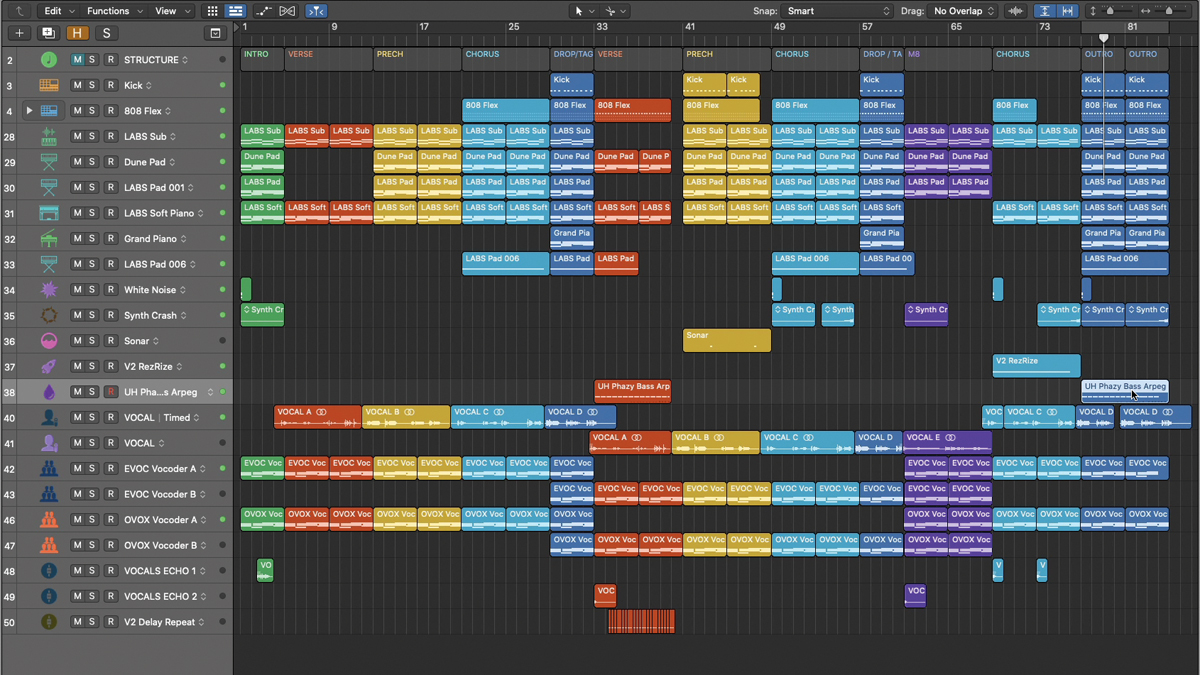

Step 12: For our outro, we use an extended eight-bar copy of the drop, with everything playing, including the full drum pattern, plus the arpeggio copied from verse 2. The vocal repeats twice to fill the eight bars, delivering the final line of the hook into a wash of reverb as the track stops dead. It all comes in at a tidy 2:45 - and all without a single chord change!
Computer Music magazine is the world’s best selling publication dedicated solely to making great music with your Mac or PC computer. Each issue it brings its lucky readers the best in cutting-edge tutorials, need-to-know, expert software reviews and even all the tools you actually need to make great music today, courtesy of our legendary CM Plugin Suite.










